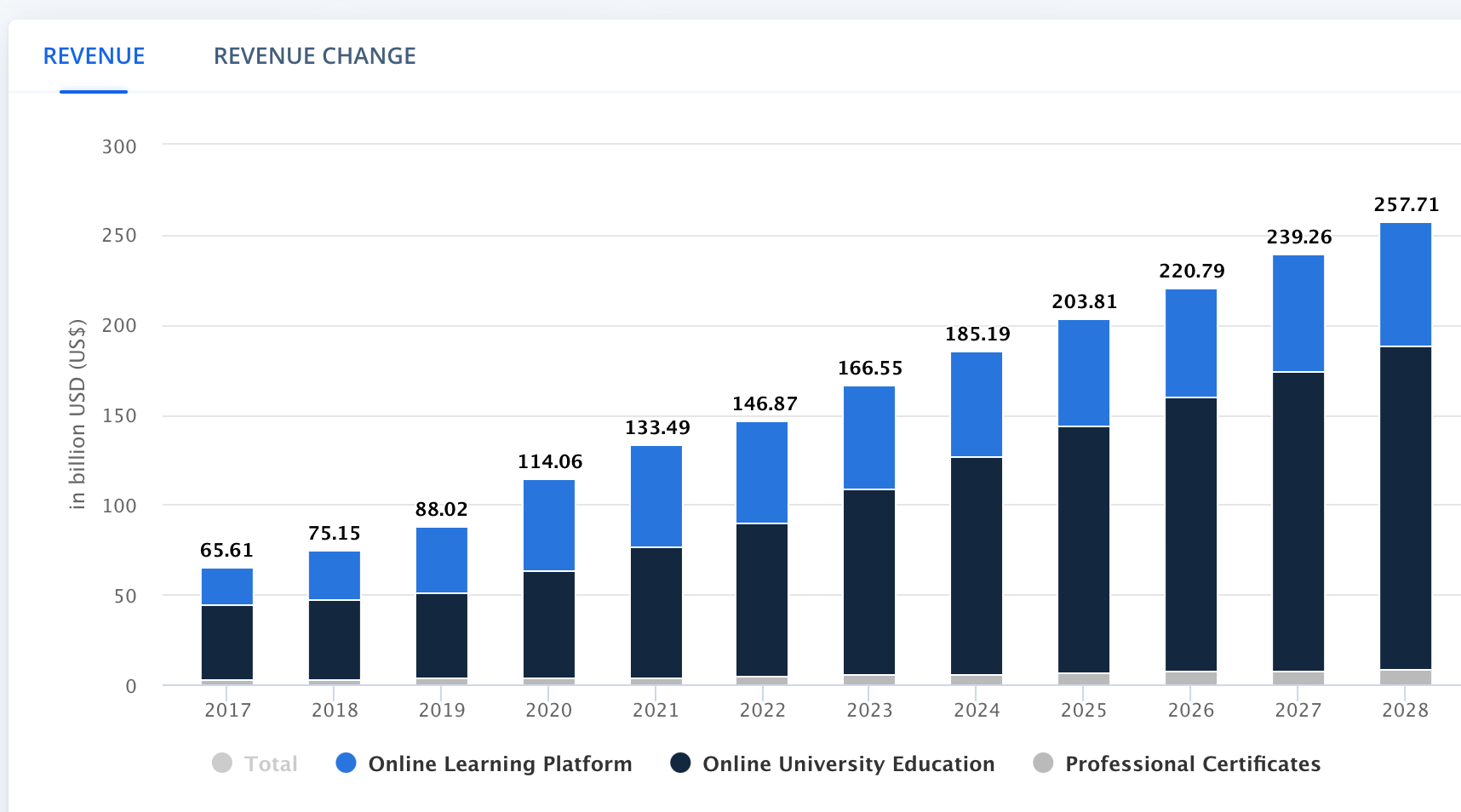What Is Remote Learning?
Remote learning, also sometimes called distance learning, describes the process of students (of all ages) being able to participate in classes and courses remotely with the aid of technology.
Remote learning saw a big boost during the pandemic, when lockdowns and school closures, as well as restrictions at universities, resulted in remote learning becoming a necessary default solution for many students in the United States and abroad.
But while 2022 saw especially significant revenue growth on a relative basis, at 30% compared to the previous year, growth has been high in previous years too. After 2020, growth continued, as the following chart from Statista shows:

Remote learning revenue growth has been strong post-pandemic, and that expansion isn’t set to stop anytime soon: revenues rose from $66 billion in 2017 to $167 billion last year, for an increase of more than 150% in six years. In the coming years, revenues will continue to rise quickly.
The majority of sales are generated in the online university education space, which has grown a lot faster than other online learning platforms, although the latter have experienced nice growth over the last couple of years as well. Professional certificates courses have experienced growth as well, but are contributing only a small portion of overall remote learning revenues.
The fact is, as remote learning becomes more commonplace and becomes better suited to instruction, it will also expand its scope and its popularity. For example, remote education is more accessible to a wider variety of people, e.g. due to students being able to stay with their parents and saving on rent when they don’t have to move to a university, or older workers that want to add a new skill set, advanced degree, or certifications to be more competitive.
For someone taking care of family members, remote learning also is way easier than moving to a different city for their education. Remote learning also can be less costly, as tutors and professors can teach from their homes and fewer large and costly university buildings are required.
How To Get Invested in the Remote Learning MegaTrend
Investors that are interested in the remote learning MegaTrend have several options when it comes to picking stocks that will benefit from this trend.
While investors can’t buy a stake in a university offering remote courses, there are education pure plays, such as China Education Group Holdings Ltd (Hong Kong:0839), or New Oriental Education & Technology Group Inc. (NYSE:EDU).
EDU has delivered compelling returns of almost 100% over the last year, and revenues have grown nicely as well, although revenues remain below the peak level that was hit during the initial phase of the pandemic.
Investors can also invest in indirect beneficiaries of this MegaTrend too. Companies that could benefit include Apple (NASDAQ: AAPL), which benefits from students requiring iPads, notebooks, and similar tech items to participate in online tutoring and online university classes. Apple’s competitors, such as Samsung Electronics Co. Ltd. (NASDAQ: SSNLF), also have the potential to benefit from this MegaTrend by supplying necessary equipment and tools.
Companies like AT&T (NYSE: T) and Verizon (NYSE: VZ) also benefit from increased remote learning since students that want to learn remotely need high-powered data plans that will provide business growth tailwinds for telecommunication players.

